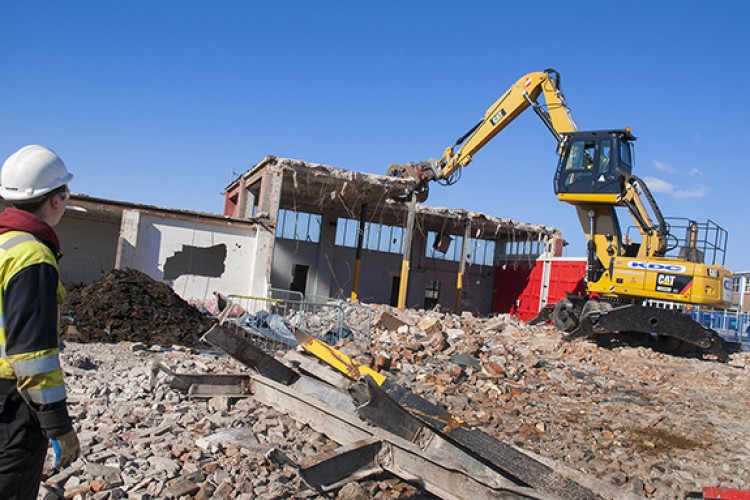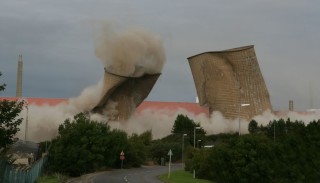Structures brought down include legacy chemical plants, R&D facilities, waste stores, reactor cooling towers and even the original site fire station. The 100th demolition was a store.
Head of decommissioning Steve Slater said: “There’s over 1300 facilities at Sellafield to be decommissioned and reaching our first century is a significant achievement. Demolition of the 100 buildings has released over 35,000 square metres of real estate which is equivalent in size to five football fields.
“This valuable space at Sellafield is necessary to fuel our continued decommissioning programme. We’re using the extra room to help retrieve, process and re-package historic nuclear waste to make it safe for long term storage and disposal.”
The job of decommissioning Sellafield is going to take more than 100 years, with the decommissioning programme stretching out to 2120. Work is currently concentrating on high priority projects where the historic buildings are deteriorating and the nuclear waste is no longer stored to modern standards.
One of the most dramatic demolition projects so far has been the explosive demolition of the 88m-high concrete cooling towers associated with the world’s first commercial nuclear power station, Calder Hall, which closed in 2003. The four cooling towers were demolished in September 2007 (below).
Demolition delivery manager Geoff Carver said: “We’re totally committed to cleaning up the Sellafield site and one of our problems is often the lack of space available to build new, modern waste processing and storage facilities for the historic radioactive waste. The demolition of redundant buildings is both cost effective as it saves on maintenance and asset care costs and provides valuable space on the congested Sellafield site.

“Contrary to what you might think, often the hazards we encounter demolishing buildings are conventional rather than nuclear. We’ve had to demolish a large number of redundant facilities which contain hazardous asbestos materials. Skilled operators are employed to ensure that the buildings are demolished safely and the waste managed in a responsible manner.”
One example was the Hurricane Run buildings which were demolished nearly 60 years after they first operated. The buildings were originally constructed to process plutonium as part of the Hurricane Run for the first atomic test in 1952.
Mr Carver added: “Often records and building plans are lost or out-of-date and yet again the project team had to overcome the unknown to demolish the Hurricane Run buildings. We safely dealt with both radioactive contamination and hazardous asbestos to demolish this part of Sellafield’s historic involvement in developing the nation’s military deterrent.”
Demolition of the original Sellafield Fire Station was also safely carried out, so closing a significant chapter in Sellafield’s history. Built in 1949, the fire station was home to the brave firefighters who famously put out the 1957 Windscale fire. The demolition was carried out in two phases over a six week period resulting in over 400 tonnes of crushed concrete.
Firstly, the internals including quantities of asbestos, were removed and sorted for recycling where possible. Following this, the external structure was bought down in a controlled manner, again with the debris being sorted throughout, enabling the maximum amount of recycling to take place.
Sellafield’s demolition team is now concentrating on developing plans to pull down the tallest chimney on the Sellafield site. The 61m chimney sits on top of the 11-storey First Generation Reprocessing Plant, standing 122m high in total.
This 1940s chimney has a stainless steel flue built within a concrete windshield and sits right in the middle of one of the busiest parts of the Sellafield site. A mini replica of chimney will be built to test the self-climbing platform which will bring the chimney down bit by bit in a controlled manner. The actual demolition won’t start for a couple of years when the new active ventilation system is in place.
Got a story? Email news@theconstructionindex.co.uk




